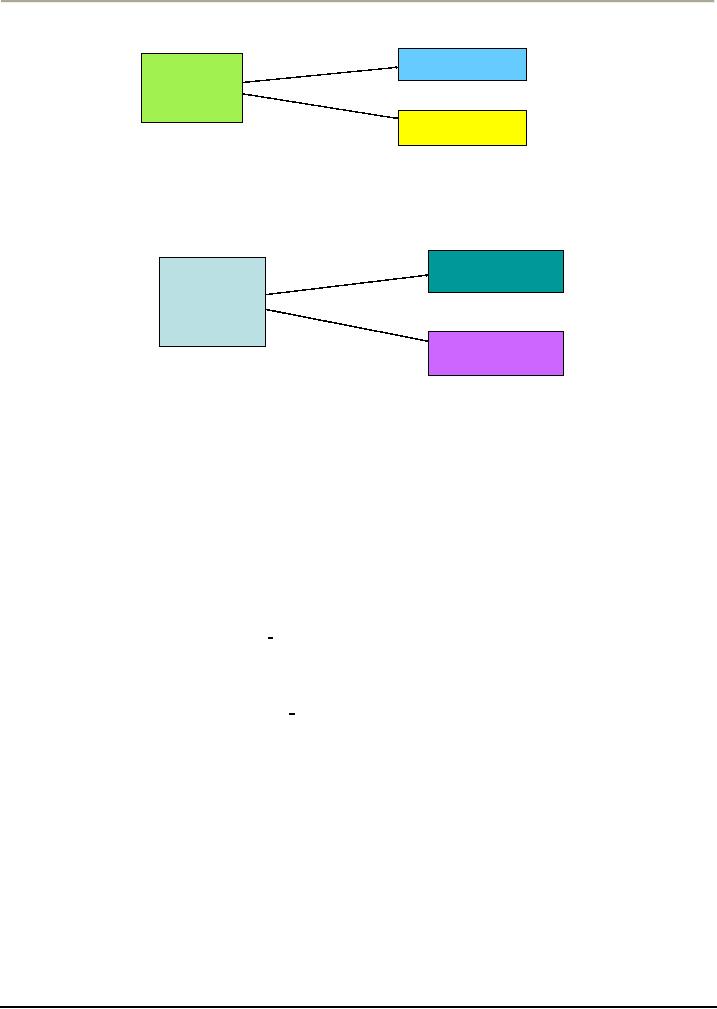 |

Gender
Issues In Psychology (PSY -
512)
VU
Lesson
05
RESEARCH
METHODS FOR GENDER
ISSUES
Content
Analysis:
Content
analysis is one of the most commonly
used methods for assessing
the impact of electronic
media,
literature,
art, textbooks, and oral
discussions. Content analysis is done
keeping specific goals,
objectives,
themes,
and constructs in
mind.
It
is a part of archival research. Concept
is an approach for systematically
categorizing and analyzing
the
content
of the behavior or its related
aspects or variables being studied.
The analysis may cover
contents of live
human
behavior, books, journals, magazines,
poetry, drama, movies, folktales, TV
programs, school
textbooks
and
curricula, advertisements
etc.
The
Procedure of Content
Analysis:
The
content of the behavior or its
related aspects/variables being studied
is systematically categorized
with
reference
to some theory .The analyst
scans contents of live human
behavior, books, journals,
magazines,
poetry,
drama, movies , folk tails,
TV programs, school curricula,
advertisements etc. according to
the
categories
under consideration. Once objective identification of
specific characteristics of contents
has been
done,
inferences are made and
conclusions are drawn. For
example, a number of researches have done
content
analysis
of TV programs, or textbooks to see how
the two genders have been
portrayed and presented.
Some
other descriptive methods:
·
Unobtrusive
measures
·
Archival
data
Unobtrusive
measures:
These
are a form of indirect observation
and indirect ways of data
collection. The subjects under study
may not
be
present at the time of investigation. Information is
gathered about the lifestyles, behaviors,
and habits of the
people
being studied through indicators present
in the surroundings. Unobtrusive measures
may be used as the
sole
source of evidence, or for supplementing
or cross-checking information collected
through direct
observation.
At
times when direct observation is not
possible, such measures may
replace observation. Physical Traces
are
one
of the sources of data in unobtrusive
measures. Remains, remnants,
fragments, objects, and
products of
past
behavior are used as
evidence. For example,
information regarding the life
style of the women of the
Indus
Valley
civilization can be obtained by studying the
dresses, pieces of jewelry, other
bodily adornments,
and
objects
found through excavations
and kept in museums.
Products
and Use traces:
Cues
to the use or nonuse of objects
and items can also be
used as evidence e.g. wall chalking, or
graffiti on
walls
of educational institutions can be
used as indicators of how the people at the
concerned locations
think
about
the opposite gender. The products used by
people also reveal information about
their habits and
lifestyles
e.g. cosmetic products used by
men and women have
been noted through a study
of garbage cans.
The
researchers observed the contents of the
area's garbage bins, instead
of interviewing the residents.
Archival
data or archival research:
Already
existing records, documents, different
forms of literature, newspaper items, photographs,
movies,
documentaries,
biographies, autobiographies etc are
used as evidence or information in this
type of research
e.g.
using newspaper records to
study the rate of crime
during the past 20 years.
Archival data may be used
to
supplement
data gathered through other
sources.
Archives
are places where data or
Information are stored. Archives
can be public or university
libraries,
government
offices, computerized databases, TV or
radio libraries etc.
Experimental
Research: Experimental
Research is the type of research that
brings scientific status to
psychology.
It employs experimental method for
finding evidence.
16

Gender
Issues In Psychology (PSY -
512)
VU
Experimental
method: refers
to using experimentation for studying a phenomenon.
Experiments are
designed
carefully in order to have carefully
tested findings.
Experimental
design: is the
plan or structure or lay out
of according to which an experiment is
conducted.
Experiment:
is the
research procedure whereby the variable
of interest (independent variable) is
manipulated
and
the effect of this manipulation is
studied.
The
main feature of experimentation is
control.
When
do we need to conduct
experiments?
Experiments
are needed:
When
we have to test hypotheses,
or
When
we have to test the impact of a
treatment, or program, on
behavior.
Experiments
are primarily used for
investigating cause and effect
relationships.
Main
components of experimental
research:
A
hypothesis about the causal
relationship.
An
independent variable.
A
dependent variable.
Manipulation
of the independent variable.
Complete
control over the dependent
variable.
Types
of variable involved in an
experiment:
Three
types of variables are
involved in experimental research:
·
Independent
variable
·
Dependent
variable
·
Control/Intervening
or confounding or extraneous
variable
Independent:
Variable:
(IV)
Independent
variable is the variable that the researcher
hypothesizes to be the causal variable.
The impact of IV
is
investigated in the experiment. IV is manipulated in
terms of kind or level.
Dependent
Variable: (DV):
The
variable thought to be the consequence or effect of
IV. It is the measure of behavior on
which the impact
of
independent variable is being studied.
Control
variable:
A
potential independent variable that can
have an impact upon the
dependent variable; it has to be
controlled
so
that it does not interfere
with findings about the impact of
IV.
The
logic of Experimental
Research:
If
there is a cause and effect relationship
between the independent and dependent
variables, then the
manipulation
of the independent variable will bring about a
change in the value of the dependent
variable.
All
other variables that can
interfere with the findings
have to be controlled in order to be
sure of the findings.
17

Gender
Issues In Psychology (PSY -
512)
VU
A
conventional experiment uses two groups of subjects:
Experimental
Group
Groups
in
a Typical
Experiment
Control
Group
·Experimental research may adopt
two main formats:
Within-
Subjects
Design
Experimental
Design
Between-
Subjects
Design
Example
of experimental research on gender
issues:
Although
experimental research is used for
investigating gender issues, it is not a
method commonly preferred
by
gender researchers.
Example:
The
study of the impact of viewing
aggressive behavior in cartoons on
male and female
children:
Two
groups of children, one male
and one female were allowed
to watch a cartoon series containing
frequent
acts
of aggression.
Their
baseline level of aggression and
indulgence in aggressive behaviors
was measured before hand.
The same
were
measured after the cartoon- viewing
phase.
Both
groups showed an increase in the
expression of aggression.
Advantages
of Experimental Research:
·
The
element of control gives
edge to this approach, strengthening the
status of psychology a
science.
·
We
can be sure about the cause
and effect relationship.
Disadvantages
of Experimental Research:
·
The
subjects may exhibit
artificial behavior instead of natural
behavior.
·
Subjects
may experience stress or
pressure that may affect
their behavior or
performance.
·
Experiments
are expensive, both in terms
of time and money.
·
Ethical
issues: We can not deceive
and keep the subjects in dark about
reality; but if we disclose the
nature
and purpose of the experiment it may
seriously affect the experimental procedure as
well as the
findings.
Ex
Post Facto
Research:
It
is a type of Quasi Experimentation, a
form of Applied Research.
Quasi Experimentation can be
taken as
"sort
of experimentation", not true experimentation.
Quasi Experiments fit into the
experimental framework,
although
not planned, initiated, or controlled by
the experimenter. In such studies the independent
variable
occurs,
or has occurred, naturally and the
researcher studies its
impact the way it is done in a
laboratory
experiment.
18

Gender
Issues In Psychology (PSY -
512)
VU
The
difference between the experimental
design and ex post facto
design:
Experiments
involve random assignment of the subjects
to the treatment conditions, whereas in ex post
facto
research
only those subjects are
chosen who have already
been exposed to theory variable under
investigation.
Groups
in a Quasi- Experiment:
Exposure
group
Comparison
group
Ex
Post Facto
Studies
Ex
post facto research is used when the
researchers are interested in studying
causal relationship between
two
variables,
but the nature of the phenomenon is such
that experimentation is not
possible.
For
example the impact of isolation
for long durations, the behavior of
boys brought up as girls,
brain damage,
impact
of high doses of androgens taken
accidentally by pregnant mothers, or
exposure to harmful drugs
or
chemical
substances.
The
subject variable is the characteristic of
interest and the readings or
scores on a chosen aspect of
behavior will
be
the dependent variable.
Ex
post facto research can
employ different formats:
Nonequivalent
Control Group Design: Two
groups are compared, one
exposed to the subject variable and
the
other
taken as the control or no-exposure
group.
One-group
pretest-posttest design: A design
in the before- after format i.e.,
readings or data before
exposure
are
compared with those after
exposure. It is a weak design
involving problems of accuracy of the
pretest data.
But
at times this is the only resort
e.g. when we have to study
changes in behavior of acid
burn victims, after
being
burnt.
19
Table of Contents:
- INTRODUCTION:Common misconception, Some questions to ponder
- FEMINIST MOVEMENT:Forms or Varieties of Feminism, First wave feminists
- HISTORICAL BACKGROUND:Functionalism, Psychoanalytic Psychology:
- Gender- related Research:Andocentricity, Overgeneralizing, Gender Blindness
- RESEARCH METHODS FOR GENDER ISSUES:The Procedure of Content Analysis
- QUALITATIVE RESEARCH:Limitations Of Quantitative Research
- BIOLOGICAL DIFFERENCES BETWEEN GENDERSHormones and Chromosomes
- BIOLOGICAL DIFFERENCES BETWEEN GENDERS: HORMONES AND NERVOUS SYSTEM
- THEORIES OF GENDER DEVELOPMENT:The Biological Approach,
- THEORIES OF GENDER DEVELOPMENT (2):The Behavioral Approach
- THEORIES OF GENDER DEVELOPMENT (3):The Cognitive Approach
- THEORIES OF GENDER DEVELOPMENT (3):Psychoanalytic Feminism
- OTHER APPROACHES:The Humanistic Approach, Cultural Influences
- GENDER TYPING AND STEREOTYPING:Development of sex-typing
- GENDER STEREOTYPES:Some commonly held Gender Stereotypes
- Developmental Stages of Gender Stereotypes:Psychoanalytic Approach, Hostile sexism
- CULTURAL INFLUENCE & GENDER ROLES:Arapesh, Mundugumor
- DEVELOPMENT OF GENDER ROLE IDENTIFICATION:Gender Role Preference
- GENDER DIFFERENCES IN PERSONALITY:GENDER DIFFERENCES IN BULLYING
- GENDER DIFFERENCES IN PERSONALITY:GENDER, AFFILIATION AND FRIENDSHIP
- COGNITIVE DIFFERENCES:Gender Differences in I.Q, Gender and Verbal Ability
- GENDER AND MEDIA:Print Media and Portrayal of Genders
- GENDER AND EMOTION:The components of Emotions
- GENDER, EMOTION, & MOTIVATION:Affiliation, Love, Jealousy
- GENDER AND EDUCATION:Impact of Educational Deprivation
- GENDER, WORK AND WOMEN'S EMPOWERMENT:Informal Work
- GENDER, WORK AND WOMEN'S EMPOWERMENT (2):Glass-Ceiling Effect
- GENDER, WORK & RELATED ISSUES:Sexual Harassment at Workplace
- GENDER AND VIOLENCE:Domestic Violence, Patriarchal terrorism
- GENDER AND HEALTH:The Significance of Women’s Health
- GENDER, HEALTH, AND AGING:Genetic Protection, Behavioral Factors
- GENDER, HEALTH, AND AGING:Physiological /Biological Effects, Changes in Appearance
- GENDER DIFFERENCES IN AGING:Marriage and Loneliness, Empty Nest Syndrome
- GENDER AND HEALTH PROMOTING BEHAVIORS:Fitness and Exercise
- GENDER AND HEALTH PROMOTING BEHAVIOR:The Classic Alameda County Study
- GENDER AND HEART DISEASE:Angina Pectoris, The Risk factors in CHD
- GENDER AND CANCER:The Trend of Mortality Rates from Cancer
- GENDER AND HIV/AIDS:Symptoms of AIDS, Mode of Transmission
- PROBLEMS ASSOCIATED WITH FEMALES’ REPRODUCTIVE HEALTH
- OBESITY AND WEIGHT CONTROL:Consequences of Obesity, Eating Disorders
- GENDER AND PSYCHOPATHOLOGY:Gender, Stress and Coping
- GENDER AND PSYCHOPATHOLOGY:The Diagnostic Criteria
- GENDER AND PSYCHOTHERAPY:Traditional Versus Feminist Theory
- FEMINIST THERAPY:Changes targeted at societal level
- COURSE REVIEW AND DISCUSSION OF NEW AVENUES FOR RESEARCH IN GENDER ISSUES